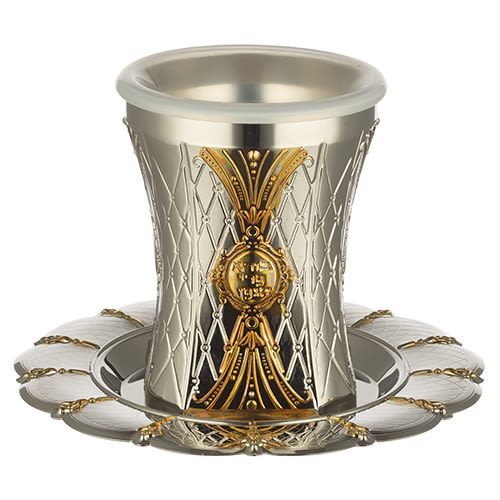
The Lights of Four Names
The Divinite lights that emanate from the respective branches of Adam Kadmon, though initially far from one another, steadily come together and reveal a likeness of man.

Part 60 of “138 Openings of Wisdom” by Rabbi Moshe Chaim Luzzato
Opening 34, part 1
The connection between AV, SaG, MaH and BaN and their place of emergence from Adam Kadmon’s sensory organs.
The passages through which the lights pass were chosen because of the way they are linked to the interior with the four Names that are arranged there, and they correspond to the different combinations in which the lights are interconnected. And the route by which the spirit travels through them is such that the place that it touches first is where it emerges.
Having discussed the radiant splendor that is revealed, we must now discuss the places from which the revelation comes forth.
The proposition has two parts. Part 1: The passages… This explains that there is a relationship between the passages and the lights that pass through them. Part 2: …and they correspond… This explains the nature of the relationship.
Part 1: The passages through which the lights pass… The way in which the inner light emerges through the apertures of the face is not merely haphazard as in the case of a blazing fire covered over by a perforated vessel, through which the light of the fire emerges wherever there is a hole. Had this been the way the inner light emerged, it would have had two results, both of which we know not to be the case. Firstly, since it is the same fire under all the holes, what emerges through each hole is also entirely uniform: the fire does not take on any new movements in order to exit via particular locations that might cause it to undergo some kind of change. Rather, the fire leaves wherever it finds a hole, and it passes through one hole in exactly the same way as it would leave through any other. Secondly, the fire standing covered under one hole passes out through that hole, while the fire standing under a different hole passes out there: the fire does not undergo any kind of change causing what is under one hole to go out via another.
Neither of these phenomena is found in the worlds of Vision, Hearing, Smell and Speech under discussion. In the first place, the light that is within is uniform, while that which emerges is not uniform, for it emerges in stages in several different ways. If it were the case that the light emerged purely haphazardly wherever it found an exit in front of it, this would mean that the light emerging from the Ear would not be any different at all from the light emerging from the Nose. Secondly, we do indeed find that the lights change places. For the lights of SaG emerge from the Ears, Nose and Mouth, while the lights of BaN emerge from a place that is higher than the Ears, Nose and Mouth, namely the Eyes. And the lights of MaH emerge from a place that is higher than all of these — namely, from the Forehead.
From all this it is quite evident that the way in which the light emerges is not merely haphazard. Rather, the passages were specially chosen to match their respective lights in each case. Each individual light must necessarily pass through its own particular passageway and not through any other, because of the special relationship that it has with it. Because of this relationship, the light undergoes a change when passing through the relevant passageway, for the emerging light is already subject to the influence of the aperture or “vessel” from which it comes forth.
If it were merely by accident that the light emerged from one aperture rather than any other, we could say that the light is not subject to the vessel — on the contrary, it would be free of subjection. If that were the case, it could be that as long as the light is contained within the vessel, it would function within the constraints of the particular vessel in which it is contained. In that case, and even though the light itself might be intrinsically unchanged, its action would change through being subject to the constraints of the vessel, as discussed earlier in connection with the Line and the Residue (see Opening 28). However, on breaking through and passing out, it should lose that subjection and act like the soul outside the body. But having said that the light passes out through a given vessel because of the specific relationship which it has with that vessel in particular, we must infer that even after its emergence, the light remains subject to the vessel — because it would not have been able to pass out through a different vessel. Even after passing out, this does not mean that it becomes free of all subjection to the vessel. On the contrary, the very nature of the vessel in question is to serve as a vessel of exit, as discussed earlier in connection with container vessels and exit vessels (see Opening 32, Part 1). This being the case, the light performs only the function of the vessel itself, and its functioning changes as if it were acting within the container vessel itself.
…were chosen because of the way they are linked to the interior with the four Names that are arranged there. This relationship between the emerging lights and the container vessels from which they emerge is not dependent upon the way things appear to stand as seen on the outside. On the contrary, this is precisely what is changed, for Ban and MaH are down below, yet they ascend higher than everything. Rather, the relationship derives from a bond forged inside, within the body. Thus we see that the whole relationship between the emerging lights and the passages through which they pass is an internal relationship which is dependent upon the order in which the Names stand arranged within, inside the body. The passageways are connected with them in the same order in which they are afterwards revealed outside.
To be continued.
(Rabbi Avraham Greenbaum is the director of Azamra (http://www.azamra.org/). The 138 Openings of Wisdom is available for purchase online at http://www.azamra.org/Product_pages/openings.htm)












Tell us what you think!
Thank you for your comment!
It will be published after approval by the Editor.